Politics
High-Stakes Peace Talks Ahead. Trump Team Leads, Zelenskyy Joins, But Ukraine Faces Tough Concessions—A Betrayal? Even As European Allies Watch In Disbelief
Published
9 months agoon
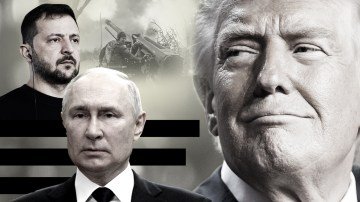
The Final Frontier For Zelenskyy And Ukraine – The High Stakes Peace Talks
In a significant diplomatic move, a team of advisers to U.S. President Donald Trump is set to meet with Russian officials next week in Saudi Arabia to initiate negotiations aimed at ending the war in Ukraine, according to U.S. government sources.
The high-level delegation, led by Secretary of State Marco Rubio, National Security Adviser Mike Waltz, and Middle East envoy Steve Witkoff, will represent Trump in discussions following his recent phone calls with both Ukrainian President Volodymyr Zelensky and Russian President Vladimir Putin.
Trump has confirmed these peace efforts, stating that the U.S. is actively working to facilitate a resolution to the conflict while ensuring that Zelensky remains a part of the talks. However, concerns have been raised about Ukraine’s role in the negotiations, with European officials stressing that Kyiv must not be sidelined. In response, Trump reiterated Zelensky’s involvement and suggested that European nations might be allowed to purchase U.S.-made weapons for Ukraine as part of the broader discussions.
Despite this assurance, Trump appeared skeptical of Zelensky’s warning that Russia might escalate its aggression beyond Ukraine should the U.S. withdraw from NATO. Secretary of State Marco Rubio emphasized that Trump is determined to assess whether Russia’s interest in peace is genuine or simply a strategy to stall for time.
Early discussions between the U.S. and Russia are already underway, with Rubio reportedly holding talks with Russian Foreign Minister Sergei Lavrov over the weekend. However, the specifics of any potential agreement remain unclear. Defense Secretary Pete Hegseth has stated that “everything is on the table,” though he suggested that Ukraine’s NATO membership is unlikely. Trump echoed this sentiment, pointing out that Russia has long been opposed to Ukraine joining the alliance and that this stance is unlikely to shift.
Additionally, Hegseth expressed doubt about Ukraine’s ability to fully reclaim all its territory, including Crimea, which was annexed by Russia in 2014.
More high-level meetings are expected, with Trump confirming that he plans to personally meet with Putin in Saudi Arabia “very soon,” though he has not yet disclosed a specific date.

Zelenskyy. The Ukrainian President Faces His Toughest Test Yet
Volodymyr Zelenskyy has had more than his fair share of tough weeks since Russia launched its full-scale invasion of Ukraine in 2022. But this past week may rank among the most challenging of his presidency. A cautious optimism at the beginning of the week quickly turned into a diplomatic and strategic nightmare, as U.S. support—long seen as Kyiv’s lifeline—began to show serious cracks.
On Monday, in an hour-long interview with a leading publication at his Kyiv office, Zelenskyy seemed optimistic. There were, he said, “positive signals from the Americans” regarding upcoming negotiations. His team was working to schedule a meeting with Donald Trump, and he expressed confidence that the U.S. president understood the importance of coordinating with Ukraine before engaging with Russia.
The key message from Zelenskyy was clear – America needed to play a central role in enforcing any potential peace deal. Without NATO membership, Ukraine needed at least NATO-style security guarantees to deter Putin from making another move in the future. “Security guarantees without America are not real security guarantees,” he stated firmly.
Then Came the Storm
However, by Wednesday, the reality of Trump’s return to the global stage hit Kyiv like a missile strike. U.S. Defense Secretary Pete Hegseth ruled out both NATO membership for Ukraine and any American role in enforcing a peace deal. But that was just the beginning.
Later that day, Trump announced he had held a 90-minute phone call with Vladimir Putin. In a press conference afterward, he dismantled three years of U.S. rhetoric on Ukraine, downplaying Kyiv’s position in negotiations and casting doubt on Ukraine’s territorial integrity. His comments landed like a bombshell in Kyiv, where Ukrainian officials were still reeling from actual Russian missile strikes that same morning.
Trump’s Blunt Words Leave Ukraine Staggering
During the press conference, Trump suggested that Ukraine had chosen to be invaded—an astonishing statement. He dismissed Ukraine’s sovereignty as a bargaining chip, claiming, “They may be Russian someday, they may not be Russian someday, but we’re gonna have all this money in there, and I said I want it back.”
This flippant remark stunned Ukrainians. For a country that has lost tens of thousands of lives in its fight for independence, being treated as an inconvenient financial investment was a gut punch. But Trump didn’t stop there. He also implied that Russia deserved to keep the land it had seized, stating, “They took a lot of land and they fought for that land.”
Zelenskyy’s Diplomatic Tightrope
In the face of these developments, Zelenskyy has been forced to walk an excruciatingly delicate diplomatic line. Criticizing Trump outright could worsen Ukraine’s already fragile position. Instead, he carefully praised Trump’s “decisiveness” and, at the Munich Security Conference, maintained a diplomatic tone despite what must have been immense frustration.
This isn’t the first time Zelenskyy has had to look through Trump’s erratic policies. In 2019, he was dragged into Trump’s first impeachment scandal when the then-U.S. president pressured him to investigate Hunter Biden. Back then, Zelenskyy had to balance diplomacy with self-preservation, offering excessive flattery to avoid political entrapment. Now, the bets are even higher—Ukraine’s survival is on the line.
The “Victory Plan” and Its Harsh Reality
To keep U.S. interest alive, Zelenskyy’s team has crafted a new strategy – offering economic incentives rather than appealing to shared values. The “victory plan” proposes that U.S. companies could benefit from Ukraine’s rare earth minerals and lucrative postwar reconstruction contracts.
The strategy seemed to work—at least temporarily. By Wednesday, U.S. Treasury Secretary Scott Bessent arrived in Kyiv with a draft agreement on natural resources. However, reports suggest that the deal requires Ukraine to hand over 50% of its mineral wealth—without receiving any security guarantees in return. Understandably, this has sparked anger in Kyiv, and Zelenskyy has so far refused to sign.
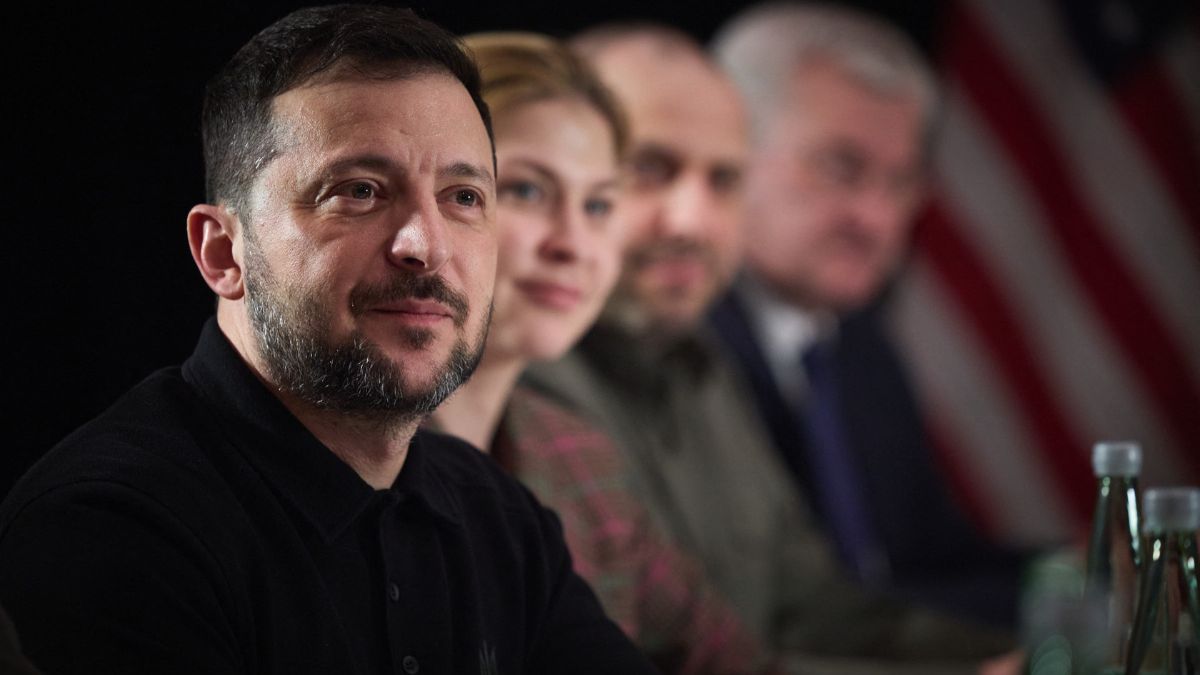)
A Betrayal? European Allies Watch in Disbelief
As events unfold, for many European officials, the crumbling of U.S. support feels like a betrayal.
The EU ambassador to Ukraine, Katarína Mathernová, attended the funeral of two Ukrainian soldiers in Lviv on Friday and later wrote, “How can a deal about Ukraine be made without Ukraine? How could such an agreement ever be explained to the families of the thousands of Ukrainian soldiers who have fallen defending the integrity of their homeland?”
While some Ukrainians are open to the idea of concessions in the name of peace, the question of security guarantees looms large. If no enforceable guarantees exist, then any deal is just a pause before Russia strikes again.
A Military Crisis Looming?
If no agreement is reached, Ukraine could face dire military consequences. Reports suggest that by the summer, the Ukrainian military may struggle to hold the frontlines—especially if U.S. military aid dries up. The army is already dealing with troop shortages, desertion issues, and exhaustion among soldiers who have been fighting for over two years.
Still, some warn against rushing into a weak peace deal. Vadym Prystaiko, former foreign minister, argued, “The earlier we get to the table, the worse the outcome will be. It’s counterintuitive, and I know it’s painful. But we don’t have to give up.”
There are still options—particularly increasing European involvement. Some officials believe Ukraine should push harder for frozen Russian assets to be repurposed as aid, offsetting the decline in U.S. support. Others point out that Ukraine has defied the odds before. In February 2022, experts predicted that Kyiv would fall within days. Instead, the country mounted a historic resistance.
Zelenskyy’s Own Political Future at Stake
Beyond the war, Zelenskyy also has to steer his own political survival. Both Trump and his envoy Keith Kellogg have hinted at the need for Ukrainian elections, a talking point also pushed by the Kremlin. Zelenskyy bristled at these demands, calling them an internal matter. Holding an election under martial law, with millions of displaced voters, is a logistical impossibility.
However, domestic criticism of Zelenskyy is growing. His leadership style, the centralization of power in his administration, and recent financial sanctions on former president Petro Poroshenko have raised eyebrows. Still, few believe that an election now would be wise. Former SBU security chief Valentyn Nalyvaichenko warned, “During a war, there is no room for elections. It would be the end for Ukraine.”
If a peace deal does emerge later in the year, elections might follow. The biggest question is whether Valerii Zaluzhnyi, the former army chief turned ambassador, will run. Early polls suggest he could defeat Zelenskyy—though for now, Ukraine’s priority remains survival.
Ukraine’s Tough Road Ahead. Pressure to Make Concessions, But at What Cost?
The latest signals from Washington suggest that Ukraine may soon face significant pressure to make concessions to Russia. U.S. officials appear to be nudging Kyiv toward negotiations—what will Ukraine agree to, and what are its absolute red lines?
No Recognition of Russian Claims
First things first—Ukraine is not going to officially recognize Russian control over any of its occupied territories. Period. Despite the U.S. push for talks, Ukrainian leaders have been clear that Crimea, Kherson, Zaporizhzhia, Donetsk, and Luhansk oblasts remain Ukrainian. While Russia illegally annexed them in 2014 and 2022, Moscow doesn’t even fully control all the territory it claims.
“We cannot accept limitations on our army, restrictions on the number of weapons, or any self-imposed constraints on forming military alliances,” said Volodymyr Aryev, a lawmaker from Ukraine’s European Solidarity party. That’s a non-negotiable stance from Kyiv.
Experts believe a ceasefire along the current front lines might be possible, along with some territorial swaps. There’s talk of Ukraine potentially exchanging its foothold in Russia’s Kursk Oblast for parts of occupied Kharkiv. This could be a way for both sides to save face—Putin wouldn’t want to end the war with Ukrainian forces occupying Russian land, while Ukraine wouldn’t formally lose more of its territory.
.jpg)
NATO Membership. Delayed, Not Denied
One of Russia’s key demands has been for Ukraine to abandon its NATO ambitions. That’s not happening. However, a temporary delay might be something Kyiv can live with—especially since NATO has already been dragging its feet on Ukraine’s membership.
“NATO has effectively postponed Ukraine’s membership until an indefinite point in the future,” said expert Rachel Mathers. In other words, Kyiv could agree to put off joining the alliance for now, without actually giving up on the goal.
But there’s a red line here too. Ukraine will not formally renounce NATO membership, and any deal that tries to force Kyiv into neutrality is dead on arrival.
Security Guarantees. A Must-Have
If Ukraine is expected to hold off on NATO, then what security guarantees will it get in return? The U.S. has floated the idea of a bilateral treaty, similar to what it has with Israel or Taiwan. But does that really provide the same level of protection?
“There could be a security agreement with the U.S., but it should be ratified by Congress,” said Ukrainian analyst Volodymyr Fesenko. That would make it harder for any future administration to back out. However, Trump’s camp has made it clear—the U.S. will continue military aid, but don’t expect American boots on the ground.
Zelensky has insisted that security guarantees from Europe alone won’t cut it. “Security guarantees without America are not real security guarantees,” he said.
Sanctions. A Big Bargaining Chip
One major sticking point is whether sanctions on Russia will be lifted as part of a peace deal. U.S. official Keith Kellogg has suggested that some sanctions could be rolled back if Russia complies with a ceasefire. But that’s risky—what’s stopping Putin from pocketing the economic relief and then reigniting the war later?
Experts argue that any sanctions relief must be tied to verifiable Russian actions. Otherwise, Putin will take it as a green light to continue his aggression.
Elections. A Distant Reality
Another demand being floated is for Ukraine to hold elections, possibly by the end of the year. But let’s be real—how do you hold fair elections when millions of Ukrainians are displaced, and parts of the country are still occupied?
Under martial law, which has been in place since the full-scale invasion, elections are banned. Even if there’s a ceasefire, infrastructure is in shambles, and millions of voters are either in exile or under Russian control. Political analyst Oleksandr Salizhenko believes it’s way too soon to even talk about elections.
The Russian Church and Pro-Putin Parties. A No-Go
Moscow is pushing for Ukraine to lift its ban on pro-Russian political parties and give legal status to the Russian-backed Orthodox Church. That’s a tough sell. Ukrainians overwhelmingly view these groups as Kremlin proxies, and lifting the bans would spark massive backlash.
“I can’t imagine how this could be politically possible,” said Merezhko. “The people will never support such parties.”
There could be some middle ground—perhaps allowing parties that aren’t explicitly pro-Russian but are open to negotiations. The same might apply to the Orthodox Church if it completely severs ties with Moscow.

The Last Bit
Where Does This Leave Ukraine In The Peace Talks?
At the end of the day, Ukraine’s biggest challenge is ensuring that any ceasefire or peace deal isn’t just a temporary pause before Russia attacks again. That’s why NATO membership, strong security guarantees, and maintaining military strength are non-negotiable.
While Kyiv may be willing to discuss freezing the front line, delaying NATO, or certain political compromises, it’s not about to hand Putin a victory on a silver platter. And with Trump’s team increasingly involved in these discussions, the next few months will be critical in determining Ukraine’s future.
As Merezhko put it: “The main question is how to deter Putin if he—should a truce agreement be reached, which I doubt—tries once again to seize a larger part of Ukraine’s territory. What could realistically stop him? In my opinion, only NATO membership.”
Zelenskyy’s leadership has been defined by crisis, and this past week may have been his most difficult yet. With Trump’s rhetoric throwing Ukraine’s future into doubt, U.S. support wavering, and European allies watching anxiously, Kyiv faces a difficult path forward.
Despite the setbacks, Ukraine has survived against the odds before. The question now is, can it do so again?
You may like
-
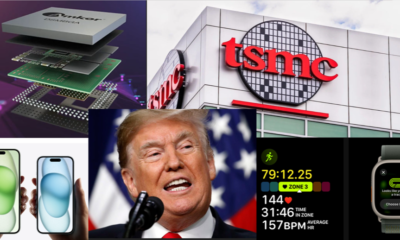

Taiwan’s ‘Historic’ TSMC Deal, A Win Or The End Of Its ‘Silicon Shield’ As China Threatens? A Jittery Taiwan Watches Trump’s Moves On Ukraine, Wondering, Could We Be Next?
-


America And China’s Thirst For Gold In 2025 Is Draining Other Countries’ Reserves; Here’s Why?
-
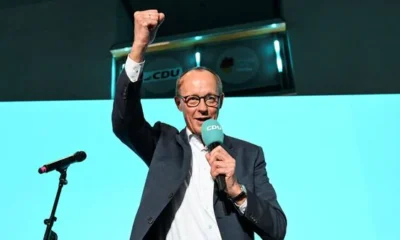

Germany’s Friedrich Merz’s Big Balancing Act—Trump, Borders & Europe’s Future. Can He Deliver?
-
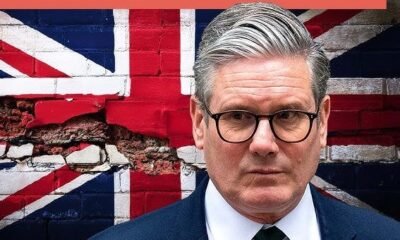

United Kingdom To Unleash Its ‘Harshest’ Sanctions On Russia Yet—But Will They Bite? How Trouble Is Brewing For Keir Starmer At Home. Shamed For Volunteering British Troops In Ukraine
-
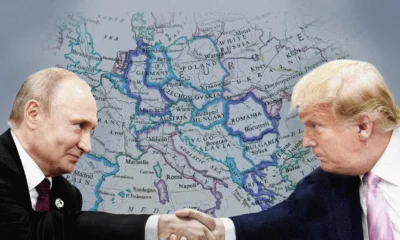

How It’s Not Trump But Vladimir Putin That Europe Is Stinging From: Trump’s U-Turn On Europe, Russia’s Strong Supply Chain—A Formidable Opponent!
-
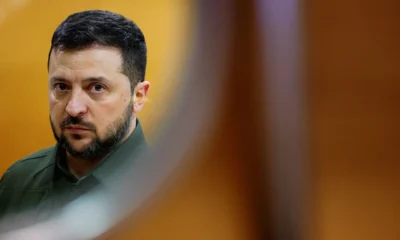

Is Ukraine Now Stuck In The US-Russia Ecosystem? Could Zelensky Have Made A Deal To Stop The War, Is Trump Right?
